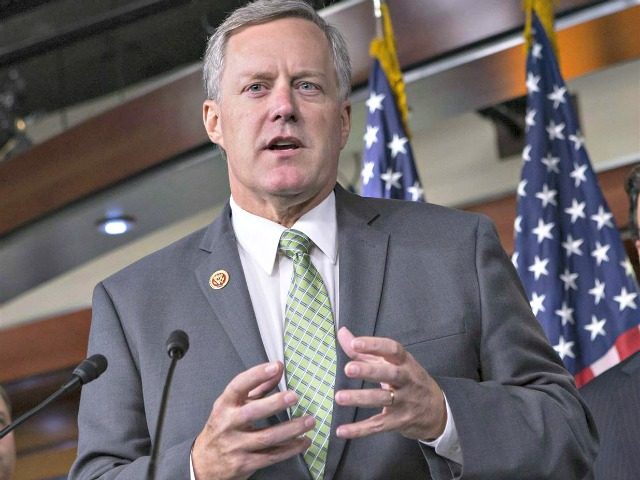The House’s immigration-and-amnesty bill is going to get a formal debate and vote in the House, according to the House Freedom Caucus.
Caucus chief Rep. Mark Meadows announced the decision to reporters following closed-door negotiations with House Speaker Paul Ryan. The talks with Ryan were held when Ryan had to trade favors to collect enough GOP votes to push through another short-term budget that will last until February 16.
Democrats voted against the GOP’s short-term budget because it does not offer an amnesty to millions of illegals.
The House budget plan next goes to the Senate, where Democrats will be faced with the decision of approving a short-term budget that does not include their demand for a huge amnesty of at least 4 million illegals. Democrats likely will make a big fuss but will also ensure a close vote for the short-term budget, because it sets up another one-month budget battle during which they can again press for their amnesty.
The House immigration bill was developed mostly by Virginia Rep. Bob Goodlatte, head of the judiciary committee. The first draft of the bill offers work-permits to 690,000 ‘DACA’ illegals while also implementing a series of offsets and protective measures, including construction of a wall, ending chain-migration and the visa-lottery, and also making the E-Verify system mandatory. The bill is not supported by Ryan and is strongly opposed by business groups, but has been praised by President Donald Trump.
The House immigration-and amnesty bill creates a dilemma and opportunity for pro-American activists — and for cheap-labor business-first Republicans.
The bill likely would be better for Americans than any bill developed in the Senate, where Democrats and business-first GOP Senators will try to block any law that reduces immigration and raises Americans’ salaries.
The Goodlatte bill includes a small-scale amnesty, which business-first Republicans will try to expand. It also allows the farm industry to bring in at least 500,000 guest-workers instead of illegals. Agriculture interests will try to grow that number. The bill increases the number of green cards for white-collar workers from 140,000 per year to roughly 175,000 per year.
But the bill also drops legal immigration from roughly 1.1 million per year down to roughly 850,000 per year, so trimming the flood of foreign labor that cuts Americans’ salaries. It also penalizes companies and cities that welcome illegals, and it reforms immigration laws to ensure that migrants cannot hire lawyers to help them exploit the many legal-loopholes in any border wall.
The debate over the Goodlatte bill is expected to be very tough.
Polls show that President Donald Trump’s American-first immigration policy is very popular.
For example, a December poll of likely 2018 voters shows two-to-one voter support for Trump’s pro-American immigration policies, and a lopsided four-to-one opposition against the cheap-labor, mass-immigration, economic policy pushed by bipartisan establishment-backed D.C. interest-groups.
Business groups and Democrats tout the misleading, industry-funded “Nation of Immigrants” polls which pressure Americans to say they welcome migrants, including the roughly 670,000 ‘DACA’ illegals and the roughly 3.25 million ‘dreamer’ illegals.

COMMENTS
Please let us know if you're having issues with commenting.